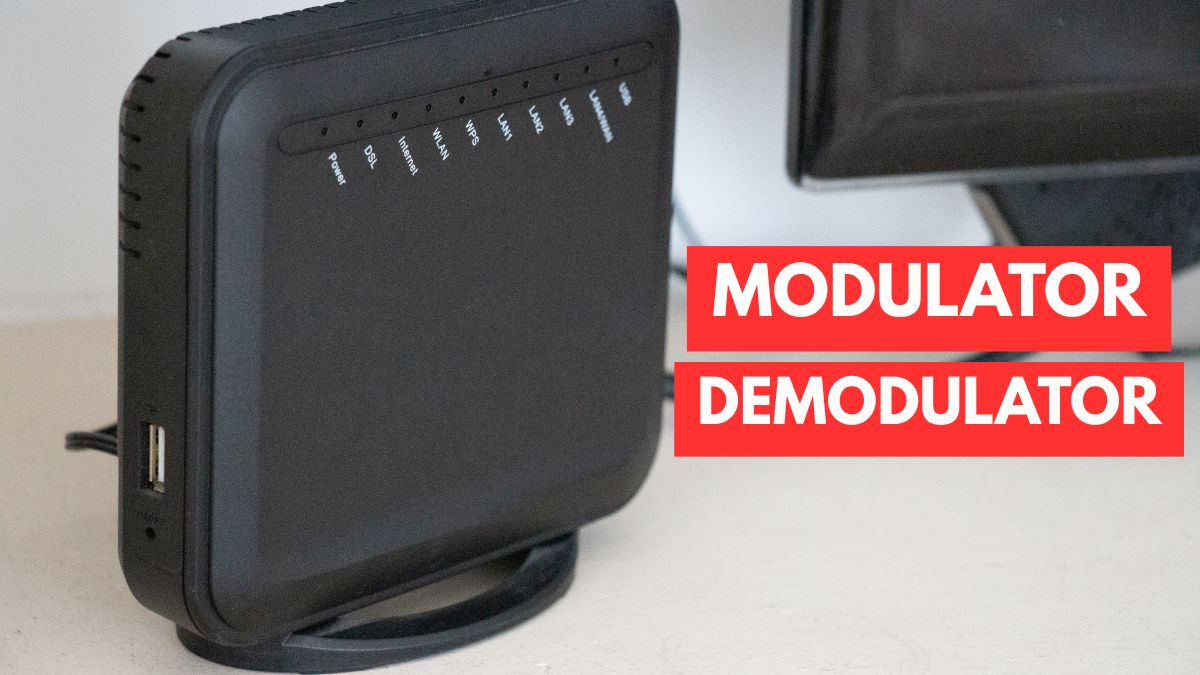Key Points
- MODEM stands for Modulator-Demodulator, translating digital to analog signals.
- MODEMs connect devices to ISPs, converting internet signals into readable data.
- Types include Cable, DSL, Fiber, Wireless, and External MODEMs for varied connections.
Full Form of MODEM: If you have ever used the internet at home, in the office, or anywhere else, you have already interacted with a device called a MODEM, even if you didn’t notice. But have you ever wondered what the full form of MODEM actually is or why this small device is so important for internet connectivity?
Well, without a MODEM, your internet connection simply would not exist.
It plays the main character role in converting signals so your devices can access the internet smoothly.
So, whether you are streaming, downloading, gaming, working, or scrolling endlessly, a MODEM is the behind-the-scenes hero who is making it all happen.
In this article, you will get to know about the full form of MODEM, how it works, the types of MODEMs, and why this device is still super relevant today.
Check out: What is the Full Form of ATM? Know the History and Functions
What Is the Full Form of MODEM?
The full form of MODEM is Modulator-Demodulator. It is a kind of dedicated translator for your internet connection. Since your computer speaks in digital code (0s and 1s) while telephone or cable lines often carry analog waves, they cannot understand each other directly.
So, the modem bridges this gap by converting outgoing digital data into analog signals to travel over the wires (modulation) and translating incoming analog signals back into digital data your computer can read (demodulation).

What Is a MODEM?
A MODEM is a device that connects your computer or Wi-Fi router to your internet service provider (ISP). It takes signals coming from the internet line and turns them into data that your laptop, phone, or smart TV can understand.
Types of MODEMs
Here are the common types you’ll hear about:
1. Cable MODEM
It connects your home to high-speed internet using the same coaxial cables that deliver your cable TV signals.
2. DSL MODEM
It provides internet access by transmitting data over the standard copper telephone lines already installed in your home.
3. Fibre MODEM (ONT Device)
It delivers ultra-fast internet speeds by converting pulses of light travelling through fibre-optic cables into digital signals your devices can use.
4. Wireless MODEM
It bypasses physical wires entirely by connecting to the internet through the same cellular signal towers that your smartphone uses.
5. External MODEM
It is a standalone box that sits outside your computer case and connects via a cable, allowing for easy installation and visible status lights.
Conclusion
The full form of MODEM, Modulator-Demodulator, already gives away how important this device is. It is basically the translator that allows your digital world to come alive. So, whether it is a cable MODEM, DSL MODEM, or fibre MODEM, this little gadget keeps your browsing smooth and your internet alive 24/7.
Comments
All Comments (0)
Join the conversation